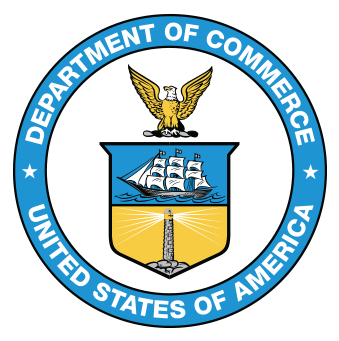Dataset Search
Sort By
Search results
113486 results found
2011 USVI Larval Reef Fish Distribution and Supply Study
Data provided by National Oceanic and Atmospheric Administration
Contains the final, processed data from the joint Coral Reef Ecosystem Research (CRER) and Reef Fish Resource cruise conducted aboard the NOAA Ship NANCY FOSTER between 19 April 2011 and 7 May 2011 (NF-10-01 and NF-10-02).
NOAA CRUISE ID:NF-11-02
US STATE DEPARTMENT CRUISE ID:DOS F2010-122
SHIP NAME: NOAA Ship Nancy Foster
OPERATING AGENCY: National Oceanic and Atmospheric Administration (NOAA)
PROJECT TITLE: Coral Reef Ecosystem Research
CRUISE DATES:
19 April 2011 through 7 May 2011
The data includes:
Tags:
Modified: 2025-04-21
Fertilization compatibility of spawning corals NCEI Accession 0160349
Data provided by National Oceanic and Atmospheric Administration
This data set includes experimental results of fertilization assays to characterize genetic compatibility between individual parental genotypes. Targeted species include Acropora palmata and Orbicella faveolata. Microsatellite multi-locus genotypes for the O.faveolata parental population are included.
Tags:
Modified: 2025-04-21
Gulf of Mexico killer whale photo-ID catalog
Data provided by National Oceanic and Atmospheric Administration
Photo-identification data on killer whales occupying the northern Gulf of Mexico have been collected in association with large vessel surveys since 1991. Photographs of killer whales are taken during encounters and unique dorsal fin marking can be used to identify individual animals. These images have been reviewed and individuals cataloged to evaluate residency and demographic patterns in killer whales in the northern Gulf of Mexico.
Tags:
Modified: 2025-04-21
Northern Gulf Institute NE Gulf reef and reef fish study
Data provided by National Oceanic and Atmospheric Administration
This data set contains species, fish counts and freq of occurrence, station data, transect lengths and area, habitat type, and depth stratum for ROV video samples and for hook line and spear samples, species, lengths, whole weights, sex, station data, bottom temperature, and gear used.
Tags:
Modified: 2025-04-21
IBBEAM- EPIFAUNA
Data provided by National Oceanic and Atmospheric Administration
Biscayne Bay is near the downstream end of the massive Southern and Central Florida Water Management System, which is being modified by the Comprehensive Everglades Restoration Project (CERP). Epifauna (i.e., shrimp, crabs, and small fishes) in nearshore Biscayne Bay are being monitored twice annually, wet and dry season, at 47 sites along the mainland shoreline to assess the effects of freshwater inflow changes brought about by CERP implementation. Bottom vegetation and salinity are being monitored concurrently in collaborative efforts.
Tags:
Modified: 2025-04-21
FL BAY SPECTROUT-DIET
Data provided by National Oceanic and Atmospheric Administration
Juvenile spotted seatrout and other sportfish are being monitored annually over a 6-mo period in Florida Bay to assess their abundance over time relative to restoration of a more natural pattern of freshwater flow from the Florida Everglades through implementation of the Comprehensive Everglades Restoration Plan (CERP). This monitoring and assessment project will provide a scientific basis for the selection of spatial and temporal abundance indices, performance measures, and targets to determine the effect of CERP on Florida Bay resources.
Tags:
Modified: 2025-04-21
USVI commercial fisheries cost data
Data provided by National Oceanic and Atmospheric Administration
To assist the Caribbean Fishery Management Council in managing marine living resources in the United States Virgin Islands, the Southeast Fisheries Science Center (SEFSC) collected economic cost data from commercial fishermen in July 2014. Surveys were administered in-person during the annual registration process. Per-trip and fixed cost estimates are included. This data set includes survey results merged with individual landings from the territorial governments logbook program.
Tags:
Modified: 2025-04-21
Natural Resource Damage Assessment Plankton Processing
Data provided by National Oceanic and Atmospheric Administration
Plankton sampling in response to the DWH oil spill has generated more samples than can be processed at marine laboratories in the Gulf region and/or at the Plankton Sorting and Identification Center in Poland where NOAA/NMFS/SEFSC normally sends SEAMAP plankton samples for analysis. The laboratory of Dr. John Lamkin at the NOAA/NMFS Southeast Fisheries Science Center, Miami is prepared to assist in the analysis of DWH plankton samples which are critical not only to ongoing DWH oil spill impact assessments but also to advance understanding of plankton dynamics in the Gulf.
Tags:
Modified: 2025-04-21
Large Pelagic Carcass Weights (Vessels)
Data provided by National Oceanic and Atmospheric Administration
Swordfish have been a commercially caught species since the early 1800s. During this early stage of the fishery, harpoon was the principal gear and the fishing was limited to the northeastern coast of the United States during the summer and fall months. In the early 1960s, Norwegian and Japanese vessels began fishing these areas with surface longline gear. U.S. fishermen soon began using longline gear and the fishing quickly spread to the western North Atlantic and became a year-round fishery.
Tags:
Modified: 2025-04-21
PELAGIC OBSERVER PROGRAM (POP). Catch/Effort data collected by observers on board U.S. commercial Pelagic Longline vessels
Data provided by National Oceanic and Atmospheric Administration
This data set contains data that are collected by trained observers aboard pelagic longline vessels in the Atlantic Ocean and Gulf of Mexico. The fishery observers are deployed to collect catch and effort data and record information on the types and numbers of fish that are discarded and interactions with marine mammals or endangered species. Vessels that have Federal permits to fish for swordfish are required to take a fishery observer onboard for the duration of a trip if the vessel is selected.
Tags:
Modified: 2025-04-21

